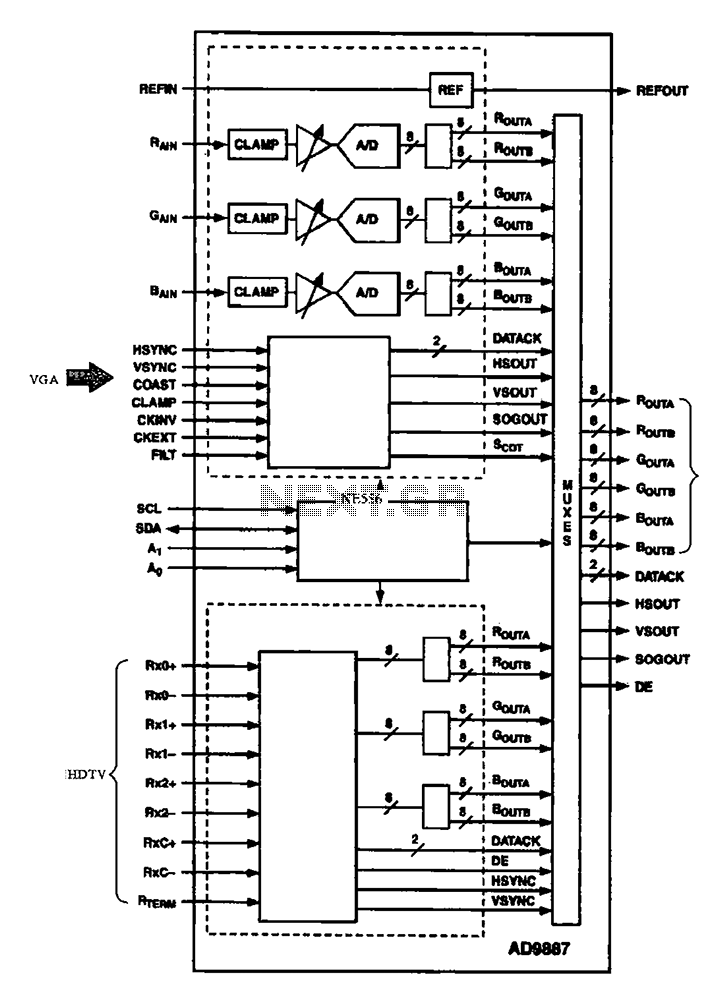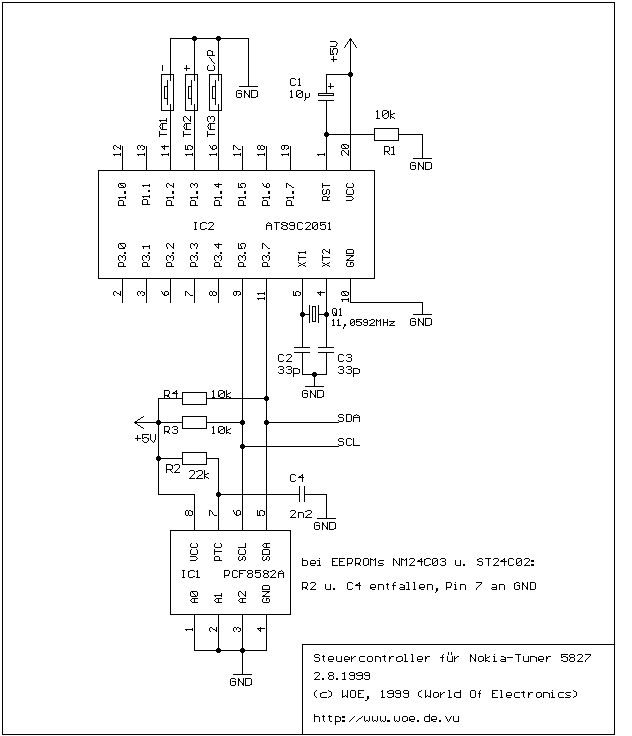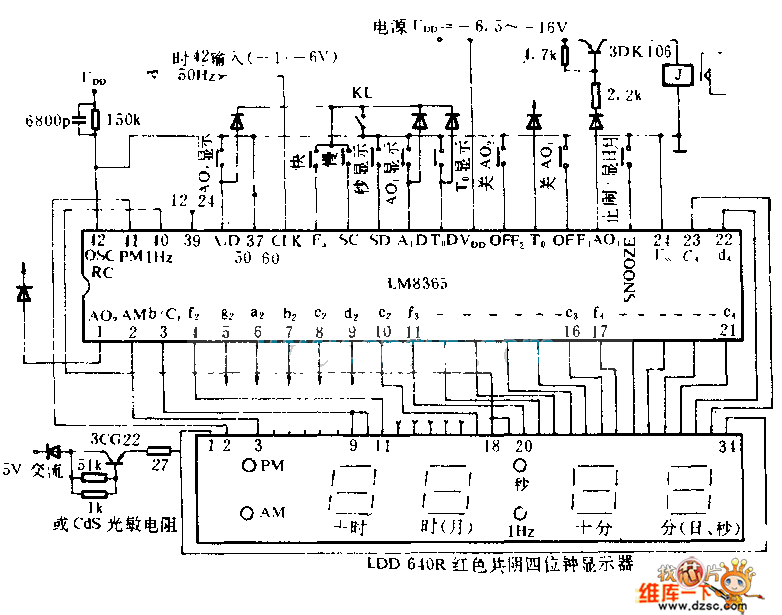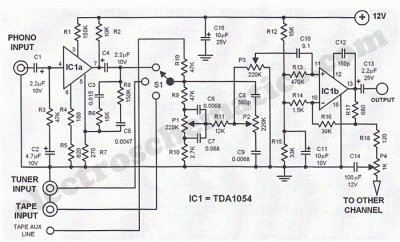
Battery status indicator circuit diagram
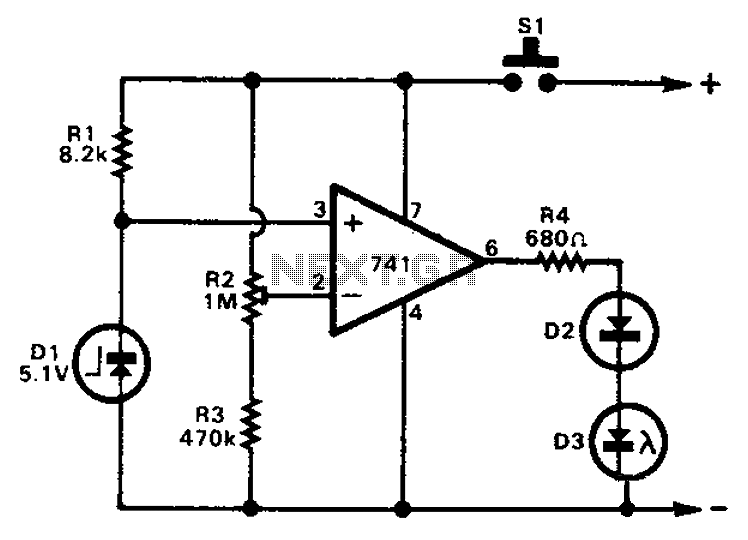
The 741 operational amplifier can function as a voltage comparator. It features a non-inverting input and a Zener-controlled voltage source, with a reference voltage set at 5.1V. Resistor R2 is used to adjust the in-phase input voltage to half of the supply voltage. When the supply voltage exceeds 10.2V, the light-emitting diode will remain off.
The 741 operational amplifier is a versatile component often utilized in various electronic applications, including voltage comparison. In this configuration, the op-amp operates in comparator mode, where the non-inverting input receives a voltage that is compared against a reference voltage derived from a Zener diode. The Zener diode is crucial for establishing a stable reference voltage of 5.1V, ensuring that the op-amp can accurately assess the input conditions.
Resistor R2 plays a significant role in this circuit by allowing for the adjustment of the in-phase input voltage. By setting R2 appropriately, the voltage at the non-inverting input can be scaled down to half of the total supply voltage. This scaling is essential for ensuring that the op-amp's output responds correctly to changes in the input voltage.
The operational amplifier's output will toggle based on the comparison between the non-inverting input voltage and the reference voltage. If the voltage at the non-inverting input exceeds 5.1V, the output of the op-amp will transition to a high state, potentially turning on a connected load, such as a light-emitting diode (LED). However, if the supply voltage is higher than 10.2V, the LED will not illuminate, indicating that the op-amp's output remains low despite the higher supply voltage. This behavior can be utilized in various applications where voltage thresholds need to be monitored and controlled, enhancing the circuit's functionality in automated systems.
In summary, the configuration of the 741 op-amp as a voltage comparator with a Zener reference voltage and adjustable input through R2 provides a reliable method for voltage monitoring and control within electronic circuits.741 op amp can be used as a voltage comparator. Non-inverting input and a zener control source. The reference voltage is 5.1V. R2 can adjust the in-phase input voltage becomes half the supply voltage. When the supply voltage is higher than 10.2V, the light emitting diode will not light up.
The 741 operational amplifier is a versatile component often utilized in various electronic applications, including voltage comparison. In this configuration, the op-amp operates in comparator mode, where the non-inverting input receives a voltage that is compared against a reference voltage derived from a Zener diode. The Zener diode is crucial for establishing a stable reference voltage of 5.1V, ensuring that the op-amp can accurately assess the input conditions.
Resistor R2 plays a significant role in this circuit by allowing for the adjustment of the in-phase input voltage. By setting R2 appropriately, the voltage at the non-inverting input can be scaled down to half of the total supply voltage. This scaling is essential for ensuring that the op-amp's output responds correctly to changes in the input voltage.
The operational amplifier's output will toggle based on the comparison between the non-inverting input voltage and the reference voltage. If the voltage at the non-inverting input exceeds 5.1V, the output of the op-amp will transition to a high state, potentially turning on a connected load, such as a light-emitting diode (LED). However, if the supply voltage is higher than 10.2V, the LED will not illuminate, indicating that the op-amp's output remains low despite the higher supply voltage. This behavior can be utilized in various applications where voltage thresholds need to be monitored and controlled, enhancing the circuit's functionality in automated systems.
In summary, the configuration of the 741 op-amp as a voltage comparator with a Zener reference voltage and adjustable input through R2 provides a reliable method for voltage monitoring and control within electronic circuits.741 op amp can be used as a voltage comparator. Non-inverting input and a zener control source. The reference voltage is 5.1V. R2 can adjust the in-phase input voltage becomes half the supply voltage. When the supply voltage is higher than 10.2V, the light emitting diode will not light up.
